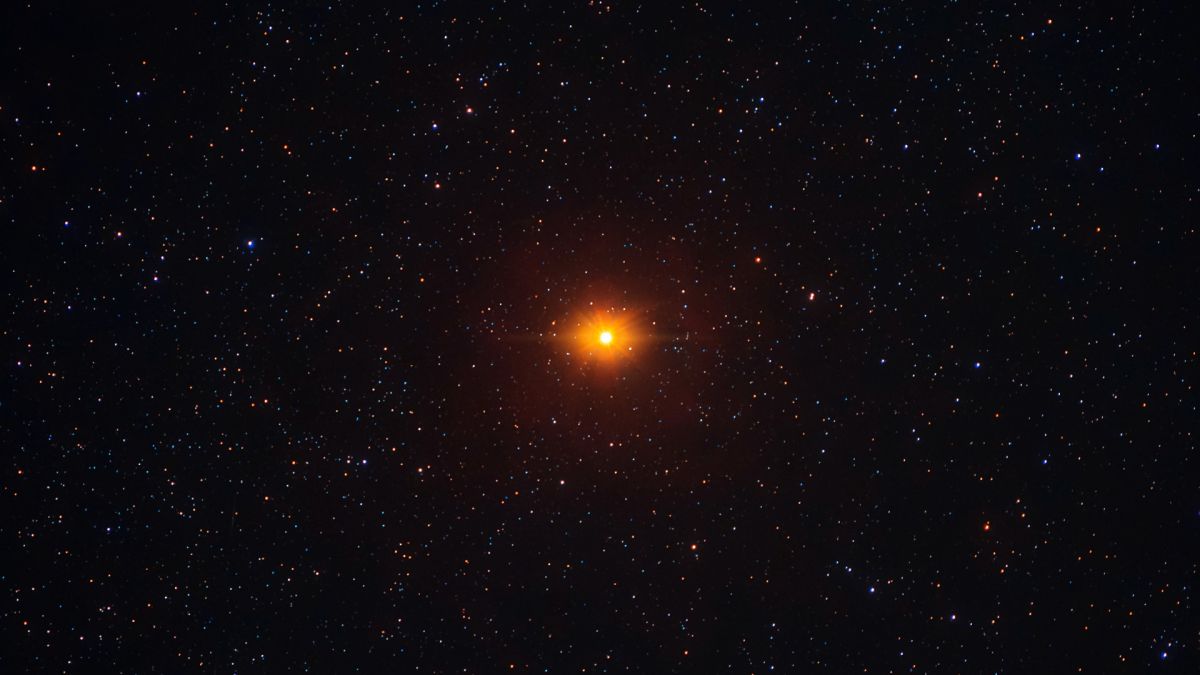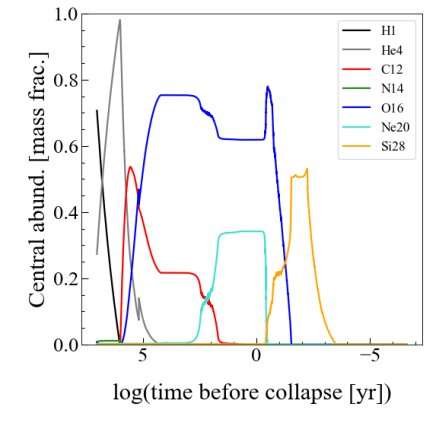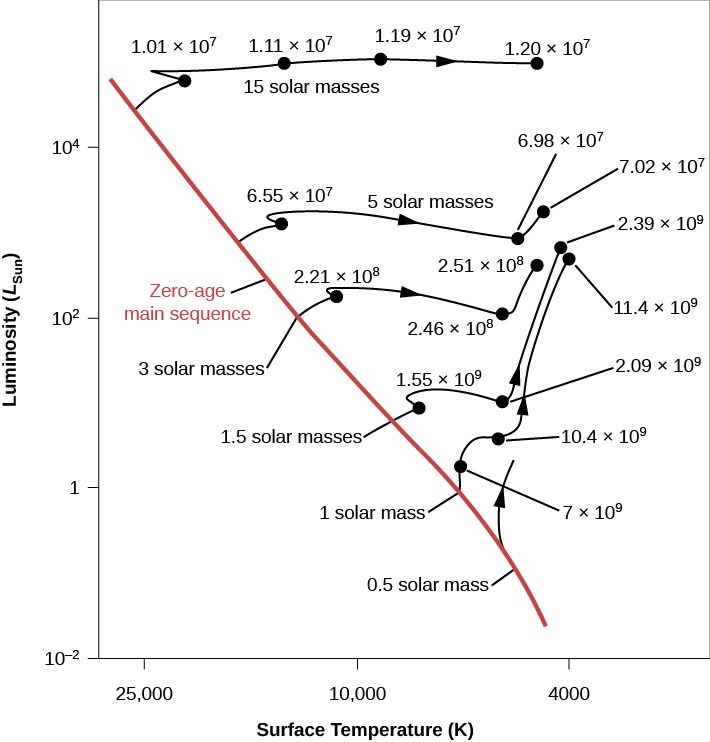- Mar 17, 2015
- 17,202
- 9,205
- Country
- United States
- Faith
- Christian
- Marital Status
- Married
While varied views (see another near the end of this post) suggests it's not clear what stage in its evolution of burning increasingly heavier elements Betelgeuse is currently in, it might be later in the carbon burning stage is one idea modeled in one new paper "The evolutionary stage of Betelgeuse inferred from its pulsation periods" (* see abstract below) , and then (if the model is right) could be late in that stage, leading to some speculation.
(* -- from the paper: "Betelgeuse is a well known bright red supergiant that shows semi-regular variations with four approximate periods of 2200, 420, 230, and 185 days. While the longest period was customarily regarded as LSP (long secondary period) of unknown origin, we identify the ~2200-d period as the radial fundamental mode, and the three shorter periods as the radial first, second, and third overtones. From a nonadiabatic pulsation analysis including the pulsation/convection coupling, we have found that these radial pulsation modes are all excited in the envelope of a model in a late stage of the core-carbon burning. Models with similar pulsation property have masses around 11M_\odot (19M_\odot at ZAMS) with luminosities (log L/L_\odot =5.27~5.28) and effective temperatures (log T_{eff}\approx 3.53) that are consistent with the range of the observational determinations. We also find that a synthetic light curve obtained by adding the fundamental and the first-overtone mode qualitatively agrees with the light curve of Betelgeuse up to the Great Dimming. We conclude that Betelgeuse is in the late stage of core carbon burning, and a good candidate for the next Galactic supernova.")
======
From Phys.org:
...the red supergiant star has brightened by almost 50%, and that has the speculation ramping up again.
Betelgeuse will explode as a supernova. On that, there is universal agreement. But the question of when is less certain. ...
...
...In their paper, the authors say that Betelgeuse could be the Milky Way's next supernova, regardless of which of their outcomes might prove to be true. "We conclude that Betelgeuse is in the late stage of core carbon burning, and a good candidate for the next galactic supernova," they write.
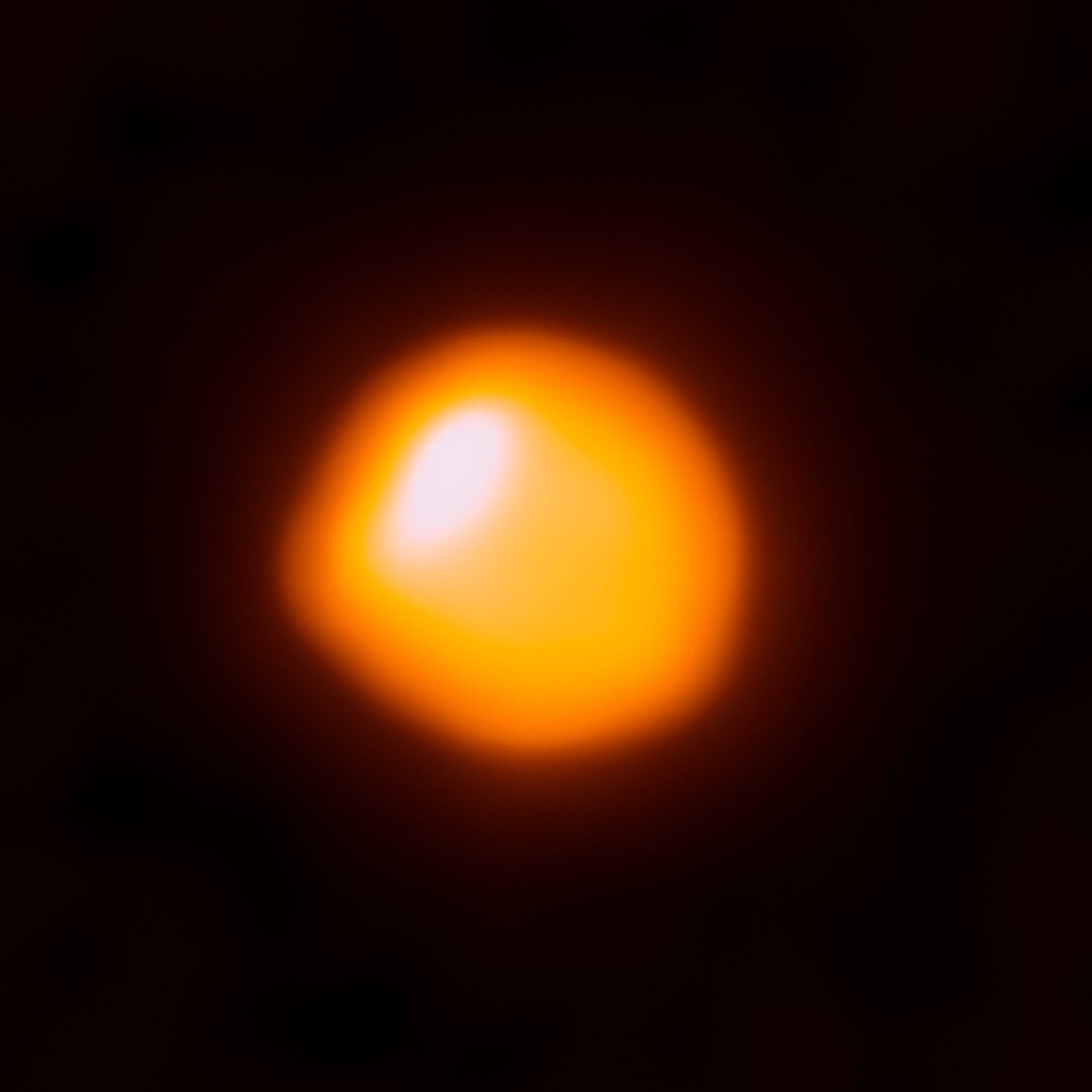
 phys.org
phys.org
If Betelgeuse being around late in the carbon burning phase (or even near the end of such) were so, it would be pretty interesting.
Here's why. These are roughly how long each phase of heavier and heavier element fusion burning lasts:
Less and less energy is produced per nuclear reaction in the nucleosynthesis of these high mass elements. So each burning phase lasts a shorter and shorter amount of time:
For a 15 Msun star:
Silicon burning makes iron, and iron won't burn to make more massive elements. It is the most stable nucleus. No more nuclear energy is available to the star. Now what?
http://burro.case.edu/Academics/Astr221/LifeCycle/highmassburn.html
But I also when looking found a possible contraindication to Betelgeuse being near to area of late carbon burning phase:
... For example, another Milky Way red giant known as VY CMa, located 3,900 light-years away from Earth in the constellation Canis, is thought to be much closer to the moment of its death than Betelgeuse. But unlike the brightening Betelgeuse, that star has been consistently dimming over the past 100 years.
"A hundred years ago, VY CMa used to be visible to the naked eye," said Montargès. "But it has expelled so much material that we can now only see it in infrared. This expelling of material is what we expect to see when the star nears the supernova explosion. VY CMa has already removed about 60% of its original mass, while Betelgeuse still has 95% of its initial material."
The astronomer added that, according to historical records, Betelgeuse used to be described as a yellow star up until 2,000 years ago, when poets began describing it as red. That, Montargès thinks, might indicate that Betelgeuse is only in the earliest stages of its life as a red giant. ...
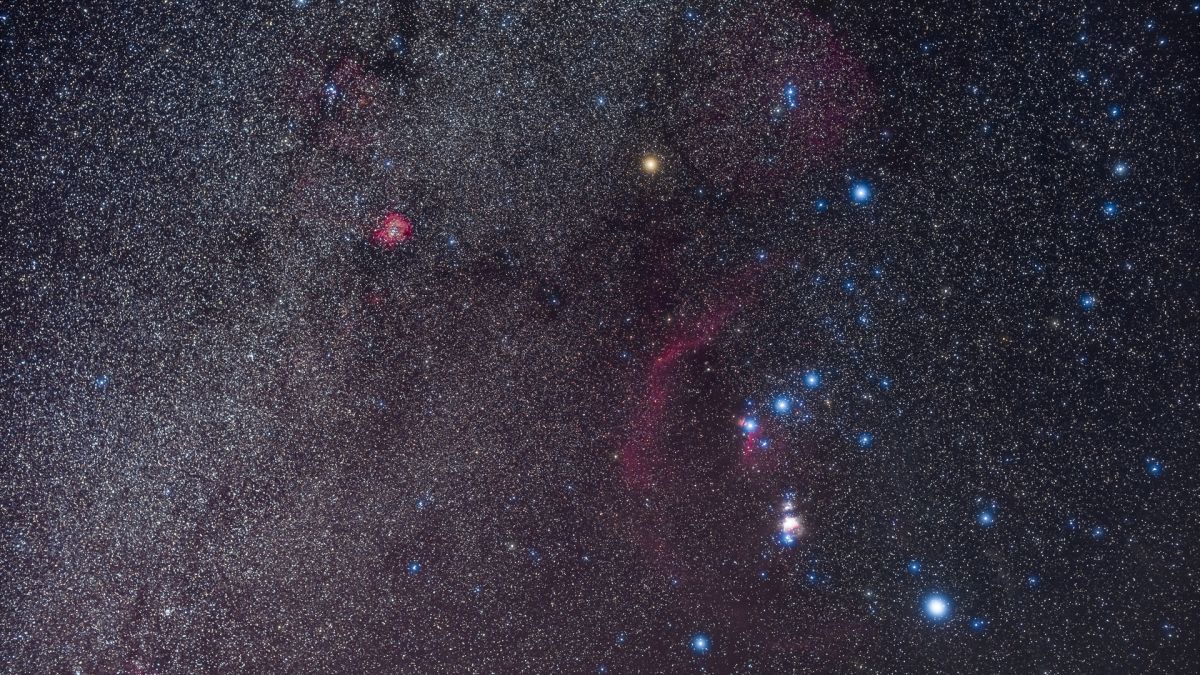
 www.space.com
www.space.com
And especially that last seems meaningful: if it really was yellow only 2,000 years ago, then to me that seems more significant to suggest we could be earlier in the red giant process.
So, I don't think it's very likely then that we are right at the verge -- that is, the end of carbon and the shortish 200 days or so of oxygen burning.
But on the other hand, if the claimed observation of it being yellow 2,000 years ago are somehow distorted (like being under different atmospheric conditions?), then that contraindication would be out, and then it seem to me more of a dice roll again, though of course the entirety of the red giant phase is quite long compared to human civilization (a factor of a ~ thousand times longer) and so the yearly odds of being right at the end are tiny).
(* -- from the paper: "Betelgeuse is a well known bright red supergiant that shows semi-regular variations with four approximate periods of 2200, 420, 230, and 185 days. While the longest period was customarily regarded as LSP (long secondary period) of unknown origin, we identify the ~2200-d period as the radial fundamental mode, and the three shorter periods as the radial first, second, and third overtones. From a nonadiabatic pulsation analysis including the pulsation/convection coupling, we have found that these radial pulsation modes are all excited in the envelope of a model in a late stage of the core-carbon burning. Models with similar pulsation property have masses around 11M_\odot (19M_\odot at ZAMS) with luminosities (log L/L_\odot =5.27~5.28) and effective temperatures (log T_{eff}\approx 3.53) that are consistent with the range of the observational determinations. We also find that a synthetic light curve obtained by adding the fundamental and the first-overtone mode qualitatively agrees with the light curve of Betelgeuse up to the Great Dimming. We conclude that Betelgeuse is in the late stage of core carbon burning, and a good candidate for the next Galactic supernova.")
======
From Phys.org:
...the red supergiant star has brightened by almost 50%, and that has the speculation ramping up again.
Betelgeuse will explode as a supernova. On that, there is universal agreement. But the question of when is less certain. ...
...
...In their paper, the authors say that Betelgeuse could be the Milky Way's next supernova, regardless of which of their outcomes might prove to be true. "We conclude that Betelgeuse is in the late stage of core carbon burning, and a good candidate for the next galactic supernova," they write.

Betelgeuse is almost 50% brighter than normal. What's going on?
Whenever something happens with Betelgeuse, speculations about it exploding as a supernova proliferate. It would be cool if it did. We're far enough away to suffer no consequences, so it's fun to imagine the sky lighting up like that for months.
If Betelgeuse being around late in the carbon burning phase (or even near the end of such) were so, it would be pretty interesting.
Here's why. These are roughly how long each phase of heavier and heavier element fusion burning lasts:
Less and less energy is produced per nuclear reaction in the nucleosynthesis of these high mass elements. So each burning phase lasts a shorter and shorter amount of time:
For a 15 Msun star:
| Reaction | Timescale |
| Hydrogen burning | 10 million years |
| Helium burning | 1 million years |
| Carbon burning | 300 years |
| Oxygen burning | 200 days |
| Silicon burning | 2 days |
http://burro.case.edu/Academics/Astr221/LifeCycle/highmassburn.html
But I also when looking found a possible contraindication to Betelgeuse being near to area of late carbon burning phase:
... For example, another Milky Way red giant known as VY CMa, located 3,900 light-years away from Earth in the constellation Canis, is thought to be much closer to the moment of its death than Betelgeuse. But unlike the brightening Betelgeuse, that star has been consistently dimming over the past 100 years.
"A hundred years ago, VY CMa used to be visible to the naked eye," said Montargès. "But it has expelled so much material that we can now only see it in infrared. This expelling of material is what we expect to see when the star nears the supernova explosion. VY CMa has already removed about 60% of its original mass, while Betelgeuse still has 95% of its initial material."
The astronomer added that, according to historical records, Betelgeuse used to be described as a yellow star up until 2,000 years ago, when poets began describing it as red. That, Montargès thinks, might indicate that Betelgeuse is only in the earliest stages of its life as a red giant. ...

Odd supergiant star Betelgeuse is brightening up. Is it about to go supernova?
'When it happens, the star will become as bright as the full moon, except that it will be concentrated in a single point.'
And especially that last seems meaningful: if it really was yellow only 2,000 years ago, then to me that seems more significant to suggest we could be earlier in the red giant process.
So, I don't think it's very likely then that we are right at the verge -- that is, the end of carbon and the shortish 200 days or so of oxygen burning.
But on the other hand, if the claimed observation of it being yellow 2,000 years ago are somehow distorted (like being under different atmospheric conditions?), then that contraindication would be out, and then it seem to me more of a dice roll again, though of course the entirety of the red giant phase is quite long compared to human civilization (a factor of a ~ thousand times longer) and so the yearly odds of being right at the end are tiny).
Last edited:


